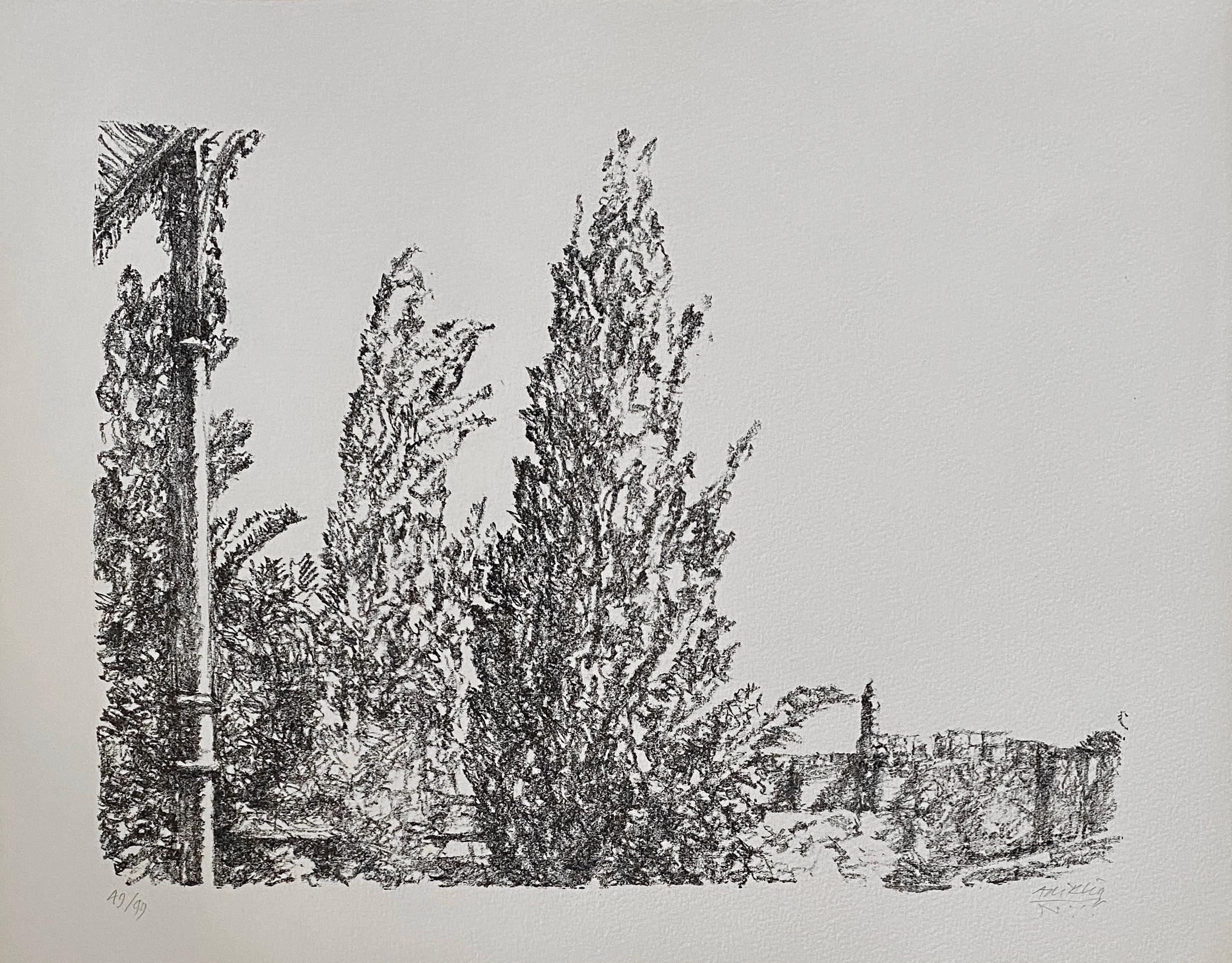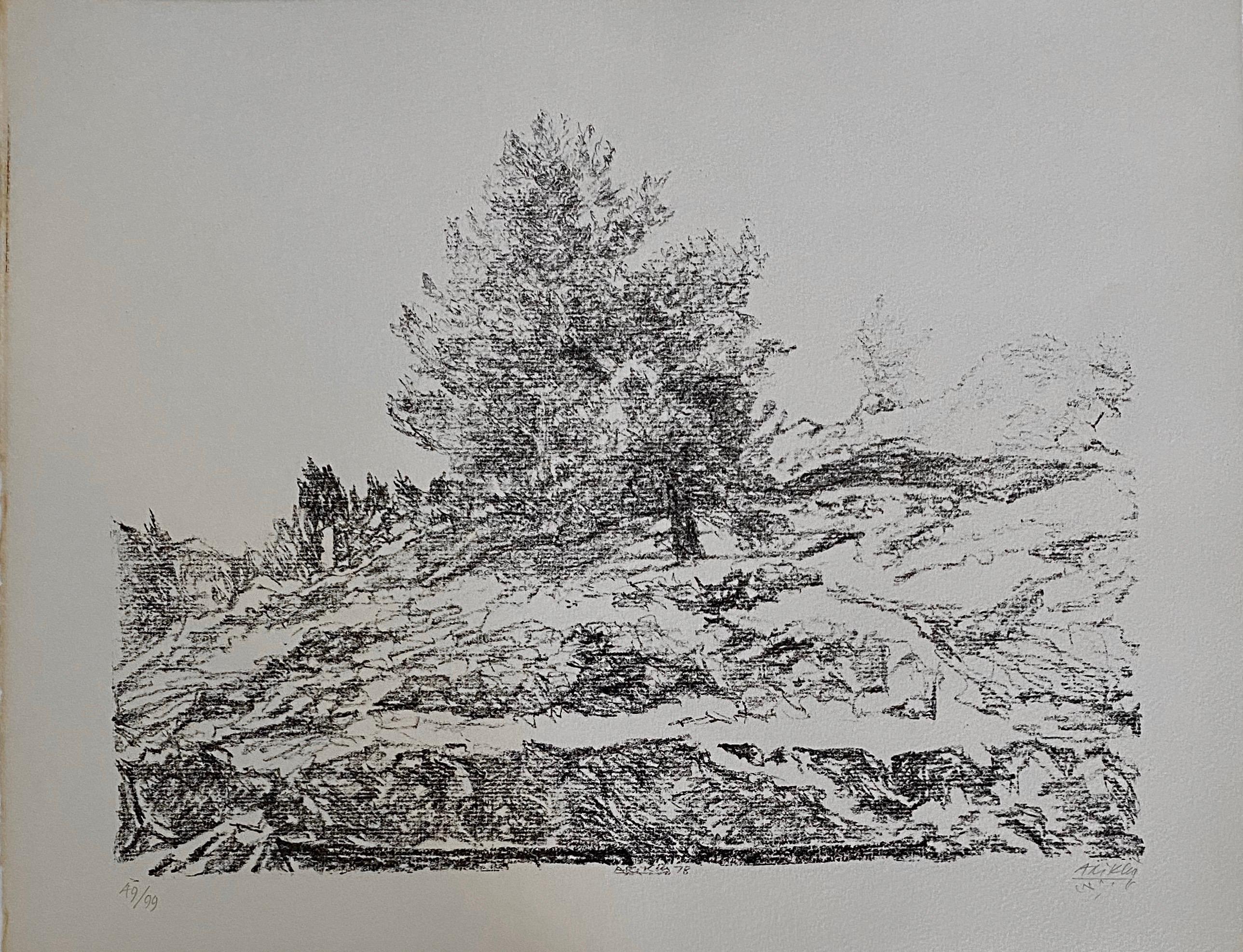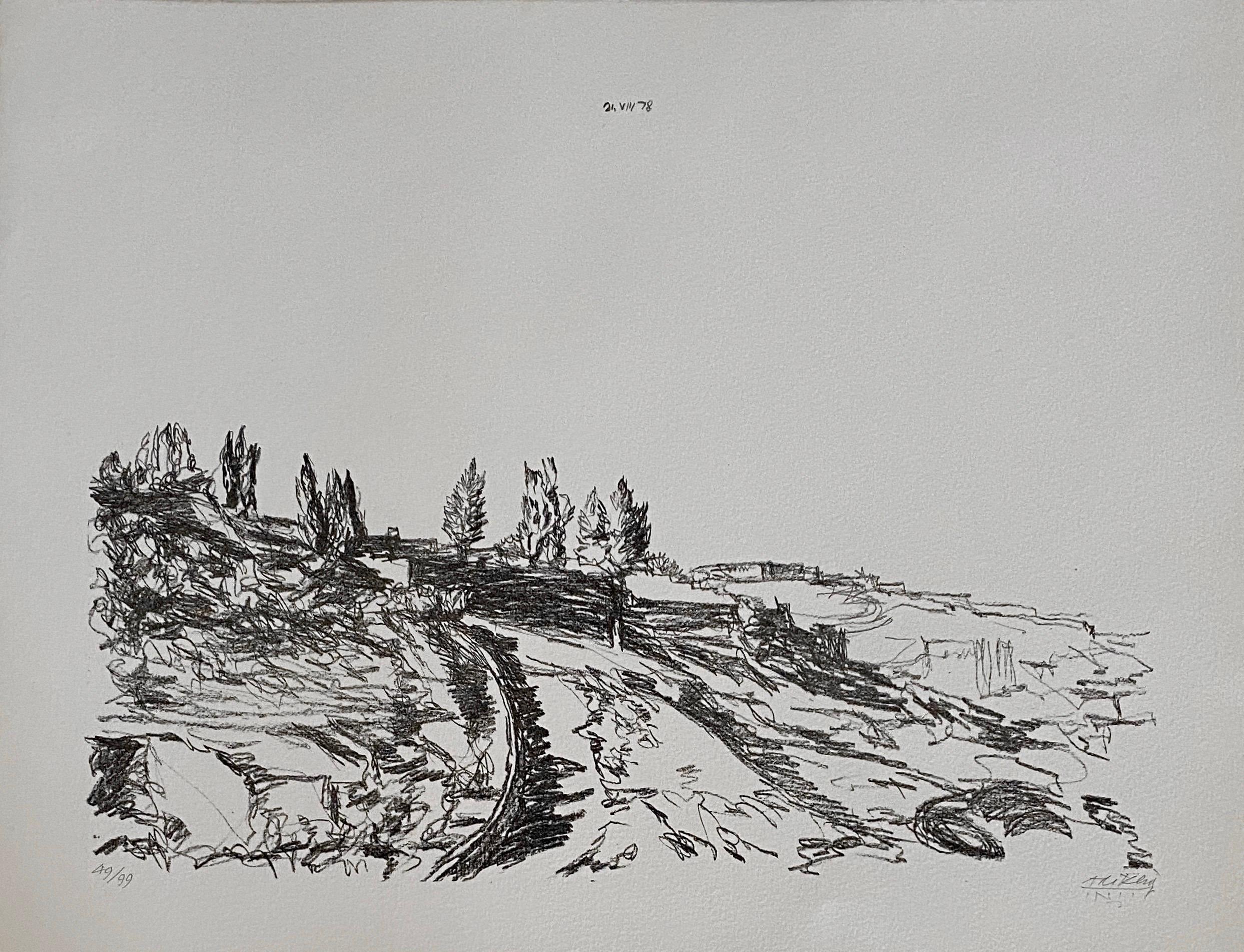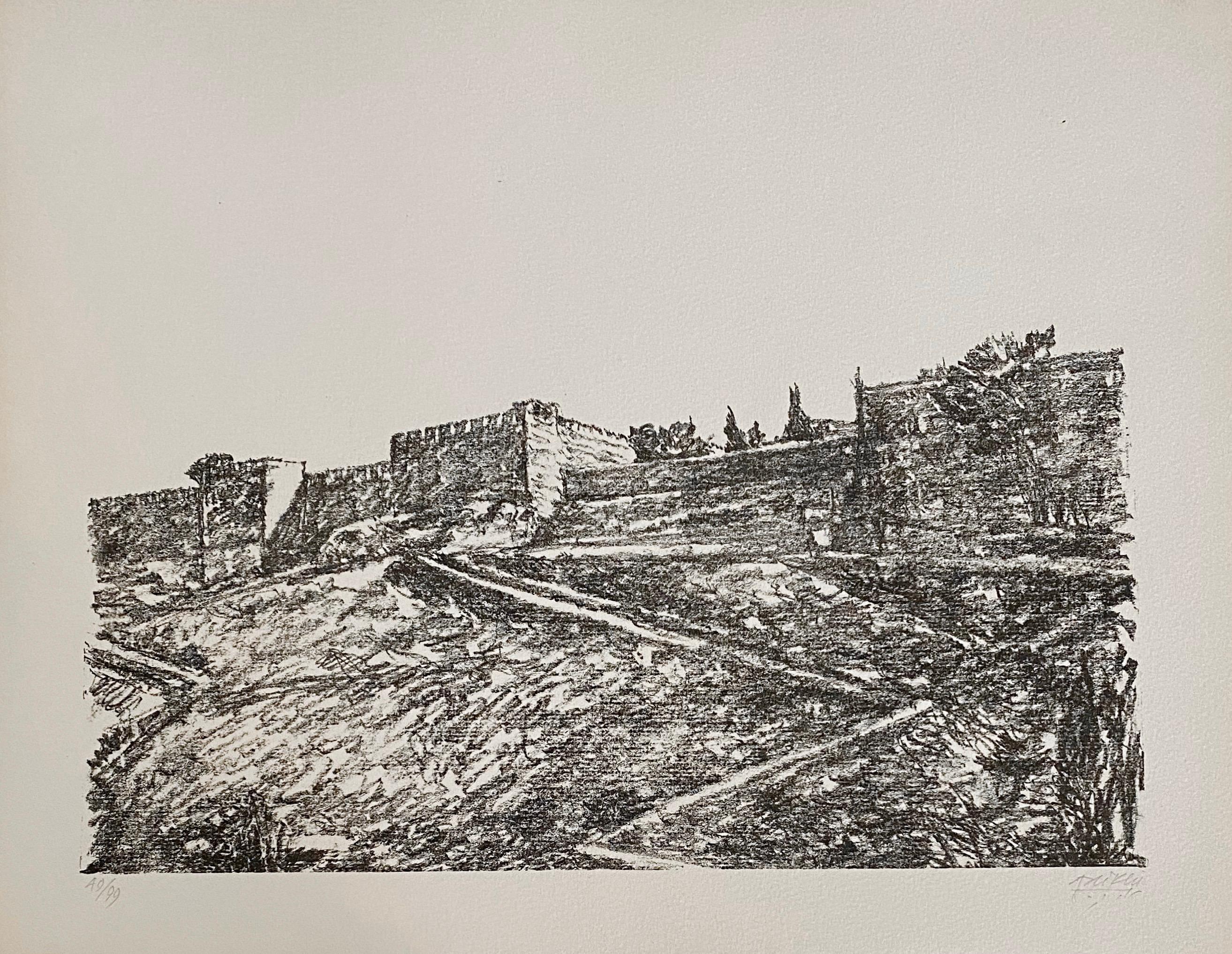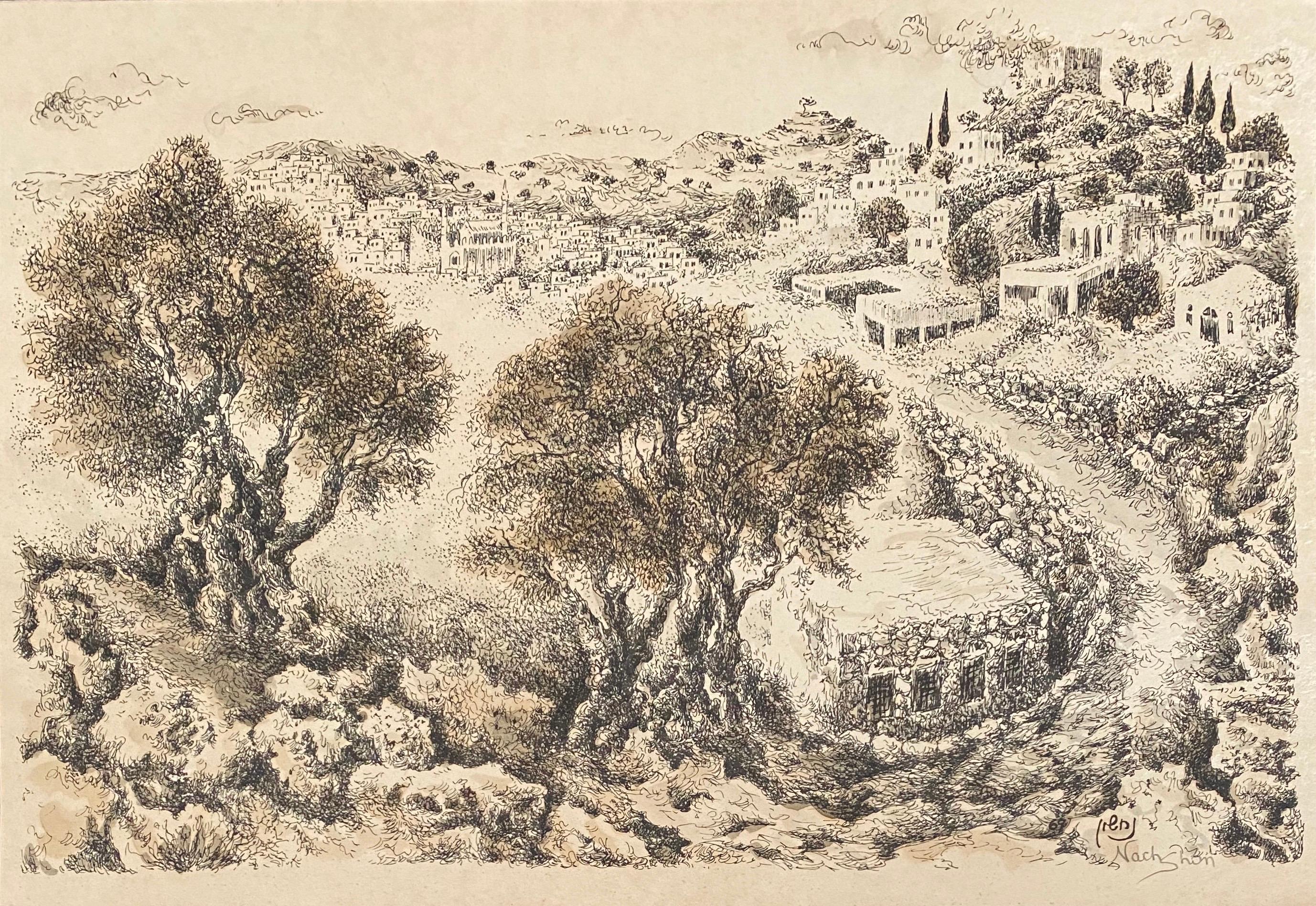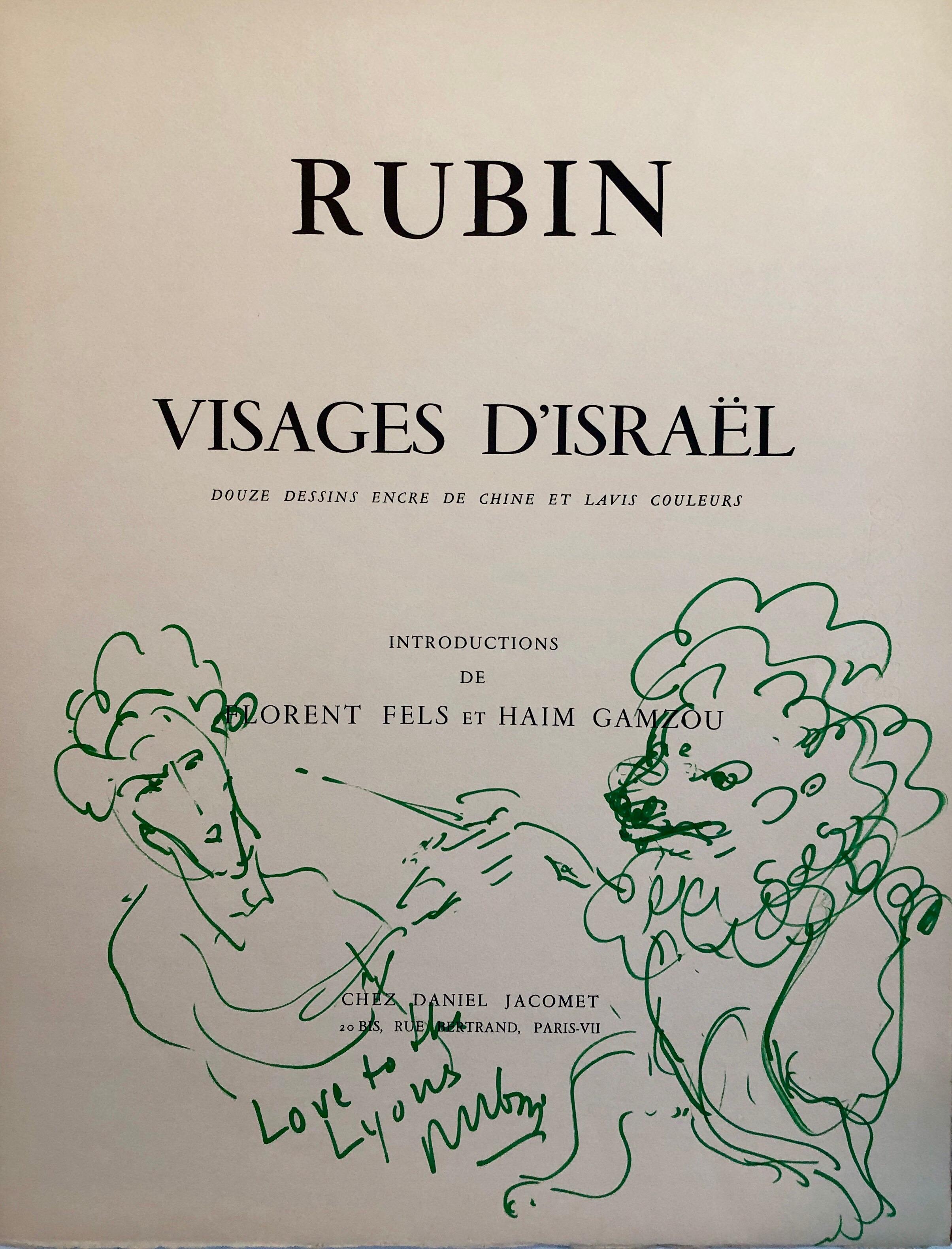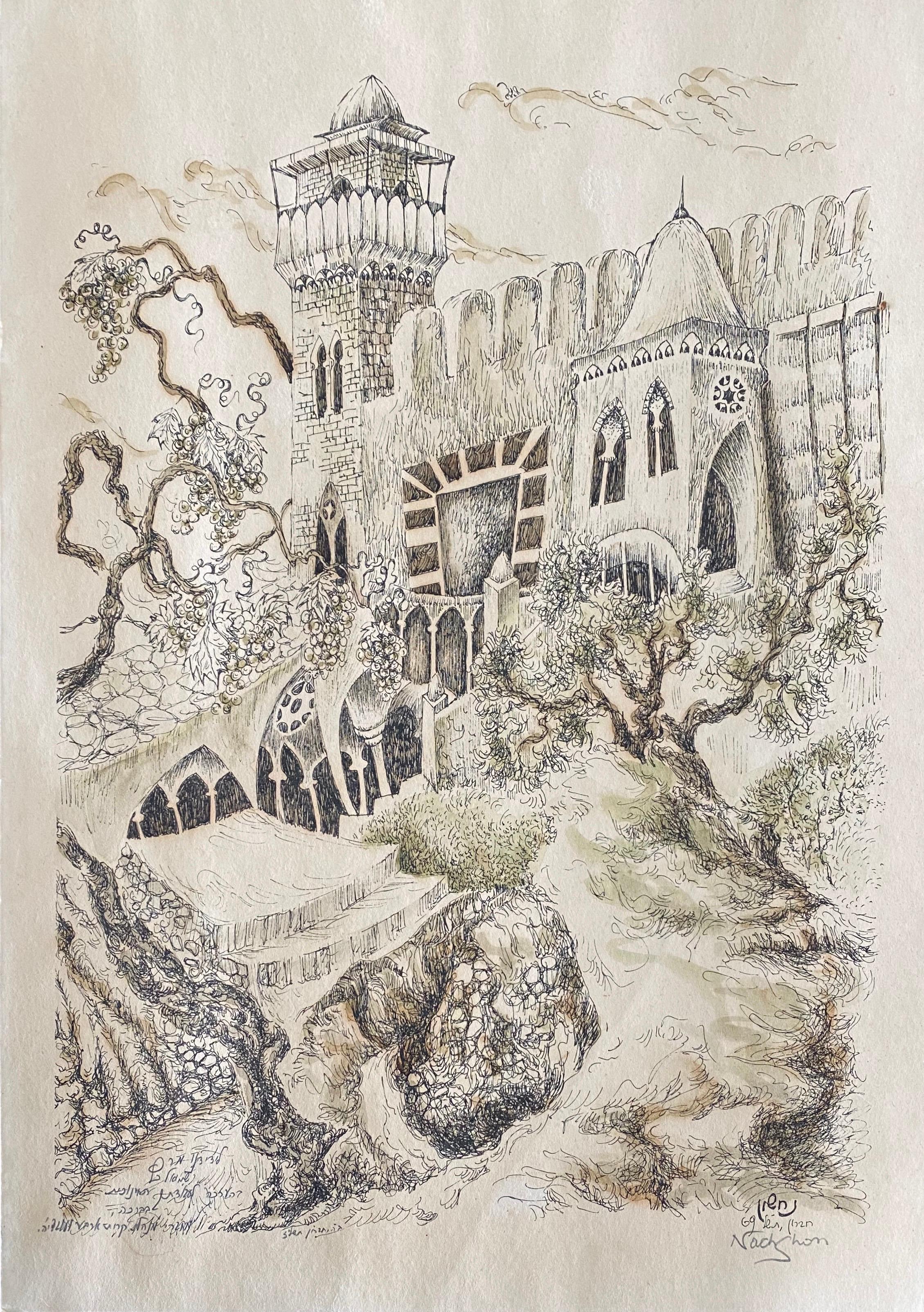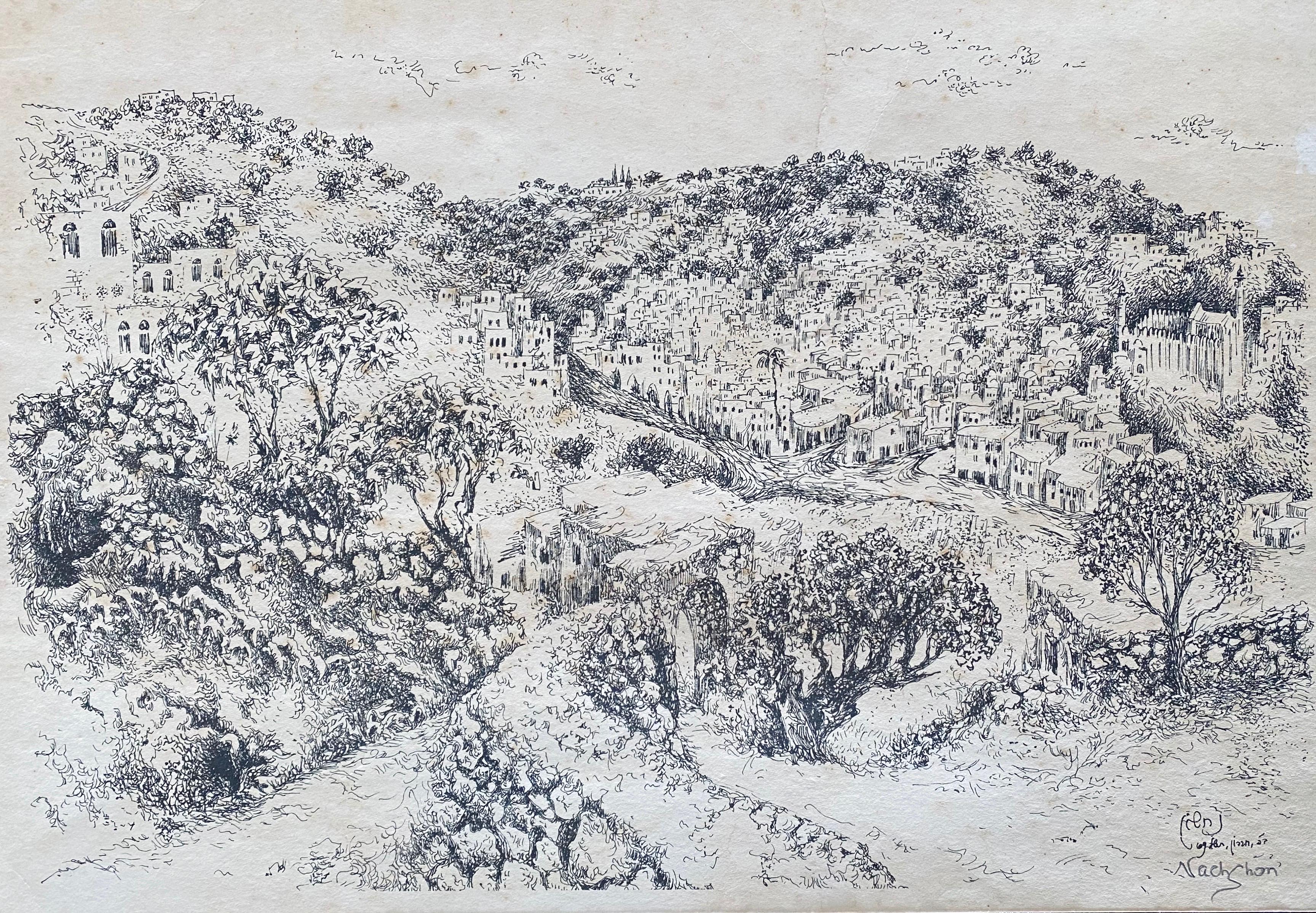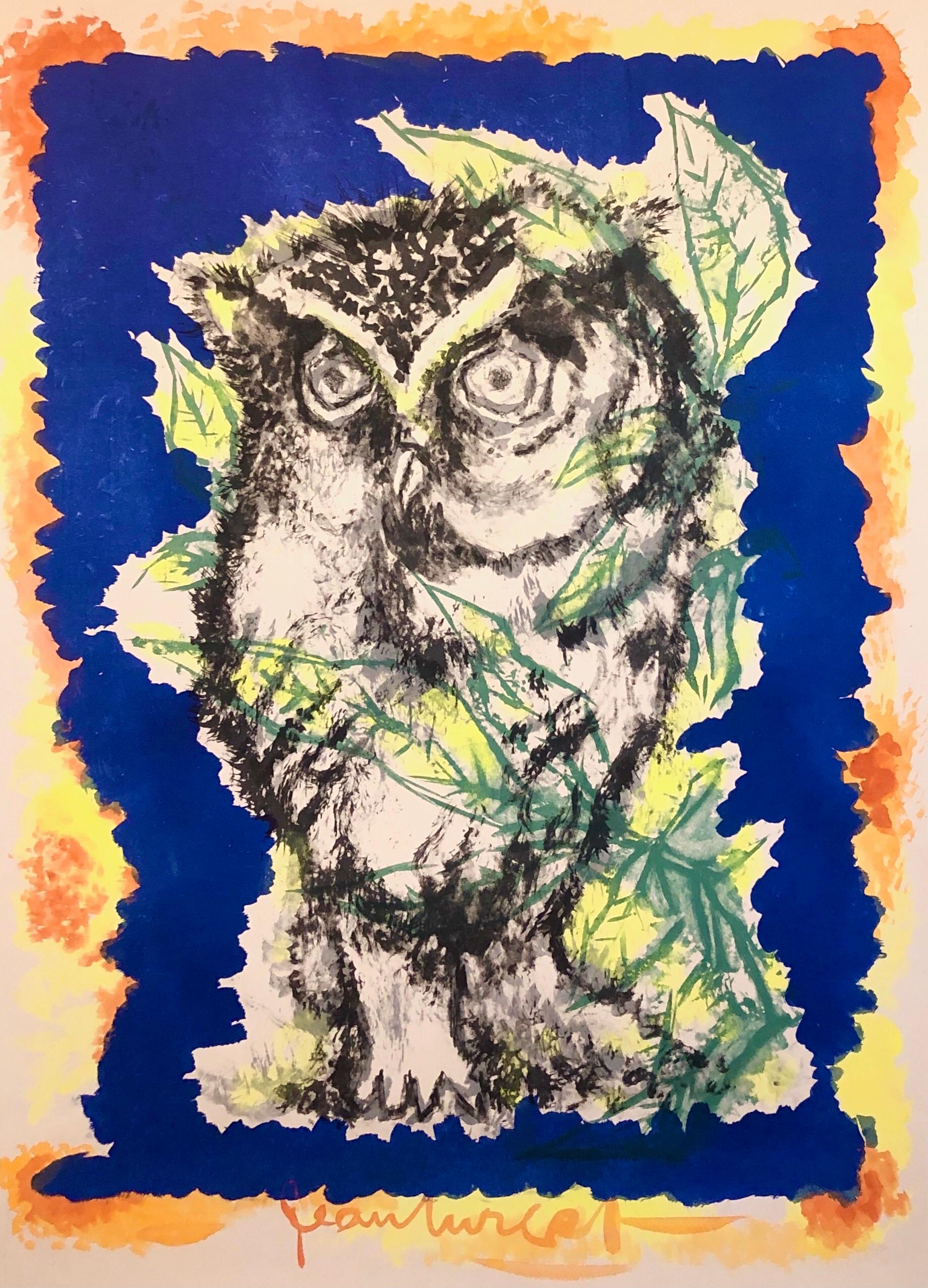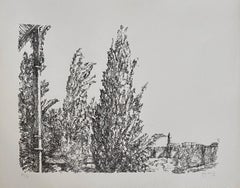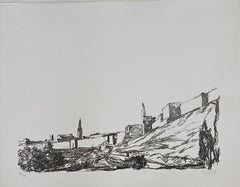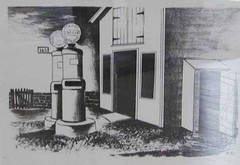
Untitled (4)
View Similar Items
1 of 4
Konrad CramerUntitled (4)c. 1930
c. 1930
About the Item
- Creator:Konrad Cramer (1888-1963, German)
- Creation Year:c. 1930
- Dimensions:Height: 14 in (35.56 cm)Width: 16 in (40.64 cm)
- Medium:
- Movement & Style:
- Condition:
- Gallery Location:Bethesda, MD
- Reference Number:1stDibs: LU742209772
You May Also Like
- Avigdor Arikha Modernist Israeli Lithograph Jerusalem Landscape Bezalel SchoolBy Avigdor ArikhaLocated in Surfside, FLHand signed in pencil and hand numbered lithograph on fine French Arches paper. Jerusalem Landscape. Avigdor Arikha (April 28, 1929 – April 29, 2010) was a Romanian-born French–Isra...Category
1970s Modern Landscape Drawings and Watercolors
MaterialsLithograph
- Avigdor Arikha Modernist Israeli Lithograph Jerusalem Landscape Bezalel SchoolBy Avigdor ArikhaLocated in Surfside, FLHand signed in pencil and hand numbered lithograph on fine French Arches paper. Jerusalem Landscape. Avigdor Arikha (April 28, 1929 – April 29, 2010) was a Romanian-born French–Israeli painter, draughtsman, printmaker, and art historian. Avigdor Arikha (originally Victor Długacz) was born to German-speaking Jewish parents in Radauti, but grew up in Czernowitz in Bukovina, Romania (now in Ukraine). His family faced forced deportation in 1941 to the Romanian-run concentration camps of Transnistria, where his father died. He survived thanks to the drawings he made of deportation scenes, which were shown to delegates of the International Red Cross. Arikha immigrated to Palestine in 1944, together with his sister. Until 1948, he lived in Kibbutz Ma'ale HaHamisha. In 1948 he was severely wounded in Israel's War of Independence. From 1946 to 1949, he attended the Bezalel School of Art in Jerusalem. In 1949 he won a scholarship to study at the Ecole des Beaux Arts in Paris, where he learned the fresco technique. From 1954, Arikha resided in Paris. Arikha was married from 1961 until his death to the American poet and writer Anne Atik, with whom he had two daughters. In the late 1950s, Arikha established himself as an abstract painter, but he eventually came to think of abstraction as a dead end. In 1965 he stopped painting and began drawing, only from life, treating all subjects in a single sitting. He engaged in drawing and printmaking only for the next eight years. In 1973, he resumed painting and became "perhaps the best painter from life in the last decades of the 20th century", as he was hailed in an obituary in Economist magazine. Arikha painted directly from the subject in natural light only, using no preliminary drawing, finishing a painting, pastel, print, ink, or drawing in one session. His profound knowledge of art techniques and masterly draughtsmanship enabled him to abide by this principle of immediacy, partly inspired by Chinese brush painting. It was a principle he shared with his close friend Henri Cartier-Bresson, to whose "instant décisif" it was analogous. He never drew from memory or photographs, aiming to depict the truth of what lay before his eyes at that moment. He is noted for his portraits, nudes, still lifes, and landscapes, rendered realistically and spontaneously. In their radi...Category
1970s Modern Landscape Drawings and Watercolors
MaterialsLithograph
- Avigdor Arikha Modernist Israeli Lithograph Jerusalem Landscape Bezalel SchoolBy Avigdor ArikhaLocated in Surfside, FLHand signed in pencil and hand numbered lithograph on fine French Arches paper. Jerusalem Landscape. Avigdor Arikha (April 28, 1929 – April 29, 2010) was a Romanian-born French–Isra...Category
1970s Modern Landscape Drawings and Watercolors
MaterialsLithograph
- Avigdor Arikha Modernist Israeli Lithograph Jerusalem Landscape Bezalel SchoolBy Avigdor ArikhaLocated in Surfside, FLHand signed in pencil and hand numbered lithograph on fine French Arches paper. Jerusalem Landscape. Avigdor Arikha (April 28, 1929 – April 29, 2010) was a Romanian-born French–Isra...Category
1970s Modern Landscape Drawings and Watercolors
MaterialsLithograph
- Avigdor Arikha Modernist Israeli Lithograph Jerusalem Landscape Bezalel SchoolBy Avigdor ArikhaLocated in Surfside, FLHand signed in pencil and hand numbered lithograph on fine French Arches paper. Jerusalem Landscape. Avigdor Arikha (April 28, 1929 – April 29, 2010) was a Romanian-born French–Israeli painter, draughtsman, printmaker, and art historian. Avigdor Arikha (originally Victor Długacz) was born to German-speaking Jewish parents in Radauti, but grew up in Czernowitz in Bukovina, Romania (now in Ukraine). His family faced forced deportation in 1941 to the Romanian-run concentration camps of Transnistria, where his father died. He survived thanks to the drawings he made of deportation scenes, which were shown to delegates of the International Red Cross. Arikha immigrated to Palestine in 1944, together with his sister. Until 1948, he lived in Kibbutz Ma'ale HaHamisha. In 1948 he was severely wounded in Israel's War of Independence. From 1946 to 1949, he attended the Bezalel School of Art in Jerusalem. In 1949 he won a scholarship to study at the Ecole des Beaux Arts in Paris, where he learned the fresco technique. From 1954, Arikha resided in Paris. Arikha was married from 1961 until his death to the American poet and writer Anne Atik, with whom he had two daughters. In the late 1950s, Arikha established himself as an abstract painter, but he eventually came to think of abstraction as a dead end. In 1965 he stopped painting and began drawing, only from life, treating all subjects in a single sitting. He engaged in drawing and printmaking only for the next eight years. In 1973, he resumed painting and became "perhaps the best painter from life in the last decades of the 20th century", as he was hailed in an obituary in Economist magazine. Arikha painted directly from the subject in natural light only, using no preliminary drawing, finishing a painting, pastel, print, ink, or drawing in one session. His profound knowledge of art techniques and masterly draughtsmanship enabled him to abide by this principle of immediacy, partly inspired by Chinese brush painting. It was a principle he shared with his close friend Henri Cartier-Bresson, to whose "instant décisif" it was analogous. He never drew from memory or photographs, aiming to depict the truth of what lay before his eyes at that moment. He is noted for his portraits, nudes, still lifes, and landscapes, rendered realistically and spontaneously. In their radi...Category
1970s Modern Landscape Drawings and Watercolors
MaterialsLithograph
- Avigdor Arikha Modernist Israeli Lithograph Jerusalem Landscape Bezalel SchoolBy Avigdor ArikhaLocated in Surfside, FLHand signed in pencil and hand numbered lithograph on fine French Arches paper. Jerusalem Landscape. Avigdor Arikha (April 28, 1929 – April 29, 2010) was a Romanian-born French–Israeli painter, draughtsman, printmaker, and art historian. Avigdor Arikha (originally Victor Długacz) was born to German-speaking Jewish parents in Radauti, but grew up in Czernowitz in Bukovina, Romania (now in Ukraine). His family faced forced deportation in 1941 to the Romanian-run concentration camps of Transnistria, where his father died. He survived thanks to the drawings he made of deportation scenes, which were shown to delegates of the International Red Cross. Arikha immigrated to Palestine in 1944, together with his sister. Until 1948, he lived in Kibbutz Ma'ale HaHamisha. In 1948 he was severely wounded in Israel's War of Independence. From 1946 to 1949, he attended the Bezalel School of Art in Jerusalem. In 1949 he won a scholarship to study at the Ecole des Beaux Arts in Paris, where he learned the fresco technique. From 1954, Arikha resided in Paris. Arikha was married from 1961 until his death to the American poet and writer Anne Atik, with whom he had two daughters. In the late 1950s, Arikha established himself as an abstract painter, but he eventually came to think of abstraction as a dead end. In 1965 he stopped painting and began drawing, only from life, treating all subjects in a single sitting. He engaged in drawing and printmaking only for the next eight years. In 1973, he resumed painting and became "perhaps the best painter from life in the last decades of the 20th century", as he was hailed in an obituary in Economist magazine. Arikha painted directly from the subject in natural light only, using no preliminary drawing, finishing a painting, pastel, print, ink, or drawing in one session. His profound knowledge of art techniques and masterly draughtsmanship enabled him to abide by this principle of immediacy, partly inspired by Chinese brush painting. It was a principle he shared with his close friend Henri Cartier-Bresson, to whose "instant décisif" it was analogous. He never drew from memory or photographs, aiming to depict the truth of what lay before his eyes at that moment. He is noted for his portraits, nudes, still lifes, and landscapes, rendered realistically and spontaneously. In their radi...Category
1970s Modern Landscape Drawings and Watercolors
MaterialsLithograph
